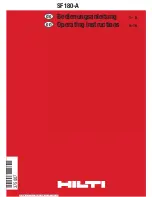
Outgoing Call Access
146
SBX IP 320 Features & Operation Guide
•
The Leading Digit table is sorted by leading digits, FLEX 2 in LDT (INT, COL, BOTH)
and DMT index.
•
Internal LCR is applied if the dialed digits are matched with one of leading digits and
FLEX 2 is INT or BOTH.
•
Loop LCR is applied if the dialed digits are matched with one of leading digits and FLEX
2 is COL or BOTH.
•
Direct CO LCR is applied if the dialed digits are matched with one of the leading digits
and FLEX 2 is COL or BOTH, and the secured CO Line belongs to the programmed CO
Group in DMT.
•
To work Loop LCR and Direct CO LCR differently with the same leading digits, there
should be a leading digit entry for loop LCR prior to the leading digits for direct CO
LCR. It is possible if the DMT index for loop LCR is smaller than the DMT index for
direct CO LCR.
•
While direct CO LCR is applied to ISDN CO, an ISDN Information message with called
party IE, which includes only the numbering plan and numbering type, is sent to the
network when a user dials a digit. It is for the network not to disconnect the line.
•
For direct CO LCR, leading digits should be programmed in consideration with the dial
tone time provided by the Network.
•
Direct CO LCR does not use an alternative DMT index if a CO Line is already accessed.
•
LCR always has the higher precedence than the flexible numbering plan table.
•
LCR can be applied in the following instances:
- Dialing after accessing a CO Line by dialing a CO Line access code (0 or 0) only.
- Dialing after accessing a CO Line by pressing the {LOOP} button.
- Dialing without accessing a CO Line.
- Speed Dial.
- Off-net Call Forward
- Redial (if the previous call is LCR applied).
- ACNR (If the call is LCR applied when activating ACNR)
•
Any leading digit string at the LDT table can be a sub-string of another leading digit
string such as 012 and 0123.
•
Capacity for LCR Table:
- 3 Day Zones
- 3 Time Zones
















































